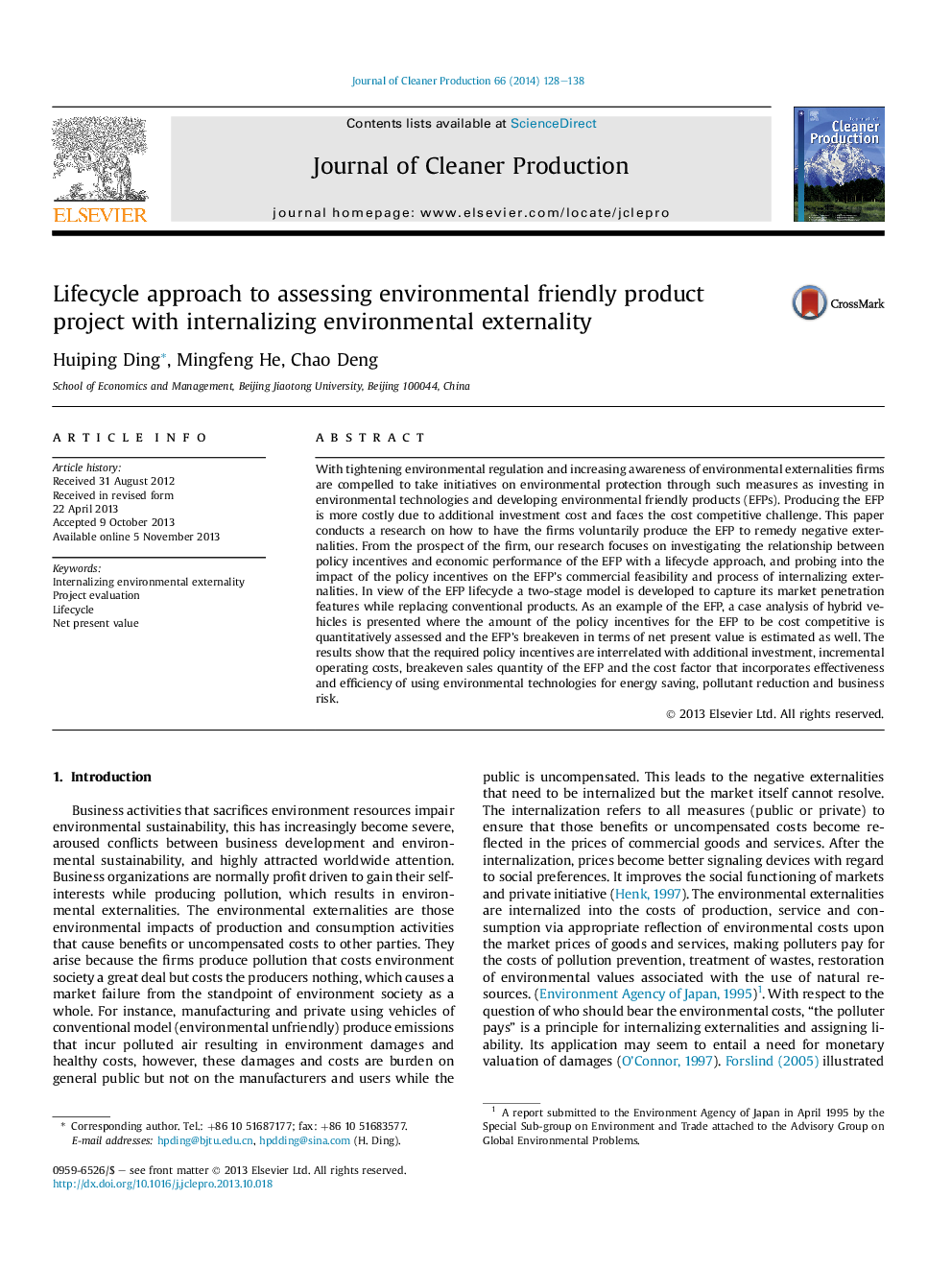| کد مقاله | کد نشریه | سال انتشار | مقاله انگلیسی | نسخه تمام متن |
|---|---|---|---|---|
| 1744982 | 1522180 | 2014 | 11 صفحه PDF | دانلود رایگان |
• We evaluate environmental friendly product (EFP) project by taking externalities into account.
• We probe into the effects of internalizing externalities on commercial feasibility of EFP.
• We structure a two-stage net present value model for evaluating performance of investing on EFP.
• The policy incentives for EFP to be cost competitive is quantitatively assessed.
• A lifecycle valuation approach for estimating EFP project breakeven level is developed.
With tightening environmental regulation and increasing awareness of environmental externalities firms are compelled to take initiatives on environmental protection through such measures as investing in environmental technologies and developing environmental friendly products (EFPs). Producing the EFP is more costly due to additional investment cost and faces the cost competitive challenge. This paper conducts a research on how to have the firms voluntarily produce the EFP to remedy negative externalities. From the prospect of the firm, our research focuses on investigating the relationship between policy incentives and economic performance of the EFP with a lifecycle approach, and probing into the impact of the policy incentives on the EFP's commercial feasibility and process of internalizing externalities. In view of the EFP lifecycle a two-stage model is developed to capture its market penetration features while replacing conventional products. As an example of the EFP, a case analysis of hybrid vehicles is presented where the amount of the policy incentives for the EFP to be cost competitive is quantitatively assessed and the EFP's breakeven in terms of net present value is estimated as well. The results show that the required policy incentives are interrelated with additional investment, incremental operating costs, breakeven sales quantity of the EFP and the cost factor that incorporates effectiveness and efficiency of using environmental technologies for energy saving, pollutant reduction and business risk.
Journal: Journal of Cleaner Production - Volume 66, 1 March 2014, Pages 128–138
